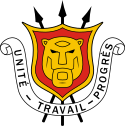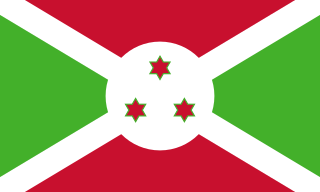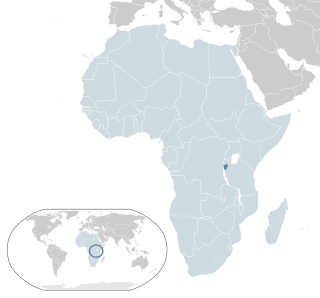 |
|---|
| This article is part of a series on the politics and government of Burundi |
Constitution |
Judiciary |
|
United Nations in Burundi |
Presidential elections were held in Burundi on 1 June 1993 following the approval of a new constitution in a referendum the previous year. They were the first multi-party elections for the presidency, the only previous elections in 1984 having been held at a time when the country was a one-party state. This election was a watershed for Burundi, representing the end of a military backed Tutsi state, and the birth of democracy.

Burundi, officially the Republic of Burundi, is a landlocked country amid the African Great Lakes region where East and Central Africa converge. The capital is Gitega, having moved from Bujumbura in February 2019. The southwestern border is adjacent to Lake Tanganyika.
Contents
Three candidates entered the contest, with Melchior Ndadaye of the Front for Democracy in Burundi defeating incumbent President Pierre Buyoya with 66% of the vote. Voter turnout was 97.3%. [1]

Melchior Ndadaye was a Burundian intellectual and politician. He was the first democratically elected and first Hutu president of Burundi after winning the landmark 1993 election. Though he moved to attempt to smooth the country's bitter ethnic divide, his reforms antagonised soldiers in the Tutsi-dominated army, and he was assassinated amidst a failed military coup in October 1993, after only three months in office. His assassination sparked an array of brutal tit-for-tat massacres between the Tutsi and Hutu ethnic groups, and ultimately sparked the decade-long Burundi Civil War.

The Front for Democracy in Burundi is a Hutu progressive political party in Burundi.

Major Pierre Buyoya is a Burundian politician who has ruled Burundi twice, from 1987 to 1993 and from 1996 to 2003. With 13 years combined as Head of State, Buyoya is the longest serving Burundian President.






